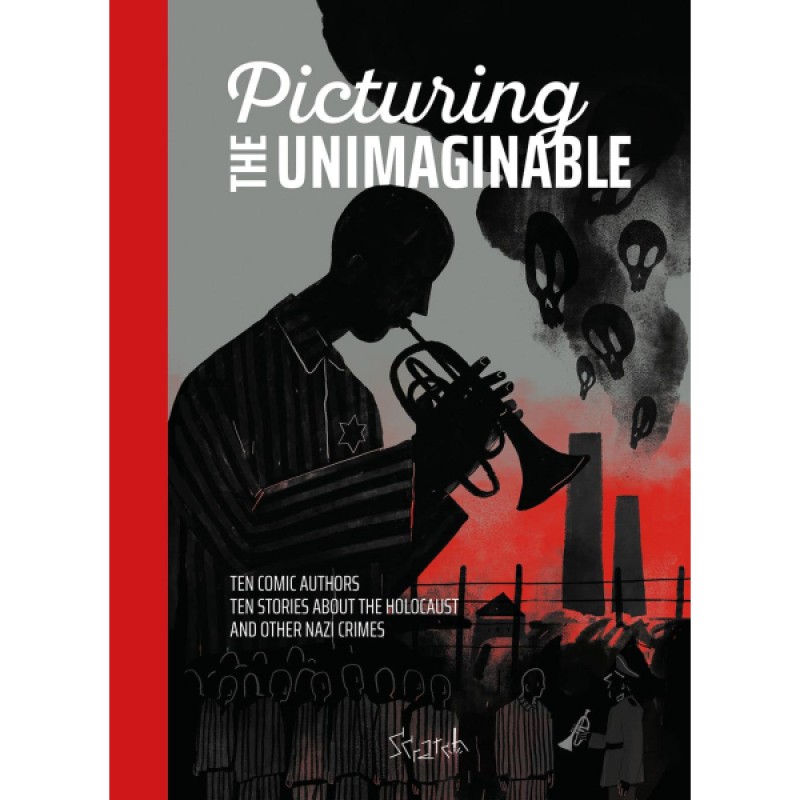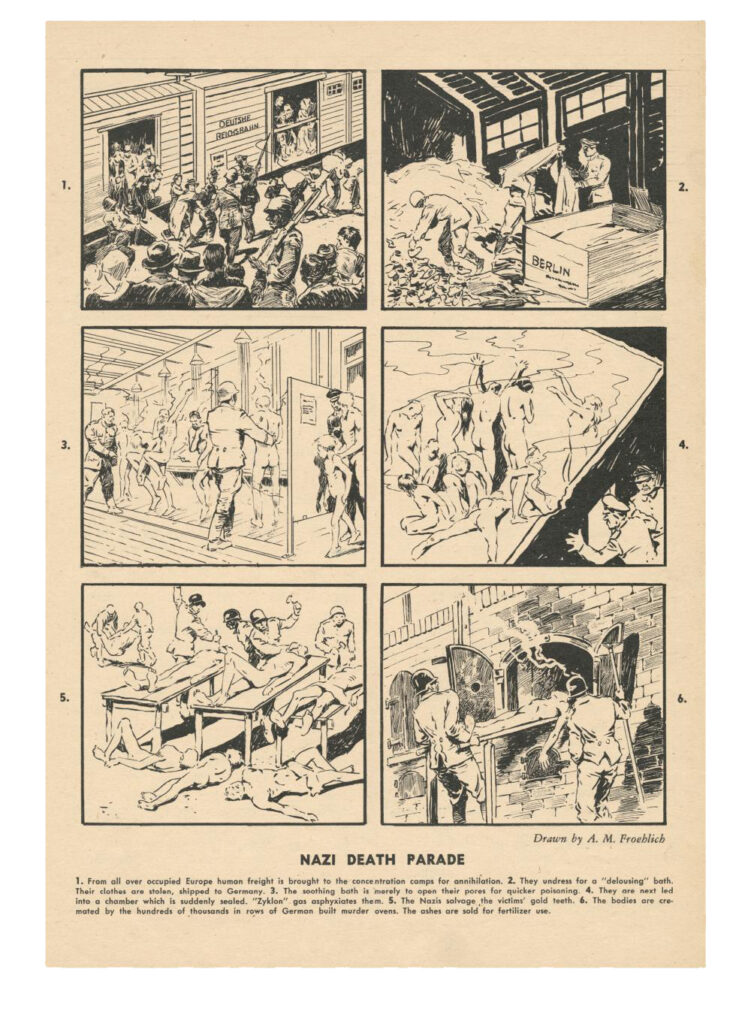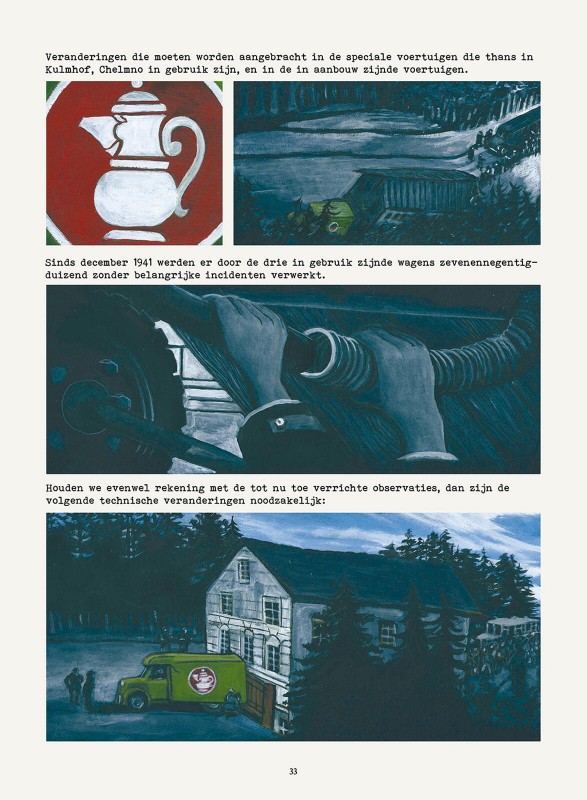Picturing the Unimaginable

TEN COMIC AUTHORS, TEN STORIES ABOUT THE HOLOCAUST AND OTHER NAZI CRIMES
It’s been almost 80 years since the second World War ended and there are only a few people alive who can tell about it from their own experiences. It’s important that it will never be forgotten what happened. Personal, detailed stories help to imagine what it was like for those who lived through it. Comics are perfectly suited to narrate and illustrate those stories. The reader’s imagination is ignited by the combination of text and drawings, made by artists in their own narrative style.

Prof. Dr. Kees Ribbens of NIOD explains the role that comic books have played in processing what everyone thought was impossible and shows the six-panel comic of August Froelich that he made in 1944 after the liberation of the concentration camp Majdanek.
B.Carrot, Wide Vercnocke, Erik de Graaf, Guido van Driel, Melanie Kranenburg, Milan Hulsing, Sterric, Jennifer Daniel, Jeroen Janssen and Arezoo Moradi, and Tobi Dahmen delved into the different stories of individuals, and brought them to life. Each comic is accompanied by a brief explanation written by staff members of one of the Holocaust memorial sites in Westerbork, Neuengamme, and Kazerne Dossin.

On July 19, the exhibition ‘Picturing the Unimaginable’ will open in the Camp Westerbork Remembrance Center. Ten comic strip makers from differnet backgrounds and ages from the Netherlands, Germany and Belgium created a story from their own perspective in the context of three former Nazi concentration camps: Neuengamme in Germany, the Kazerne Dossin in Belgium and Camp Westerbork in the Netherlands. The graphic novel of the same name will be published in four languages (German, English, French and Dutch).



